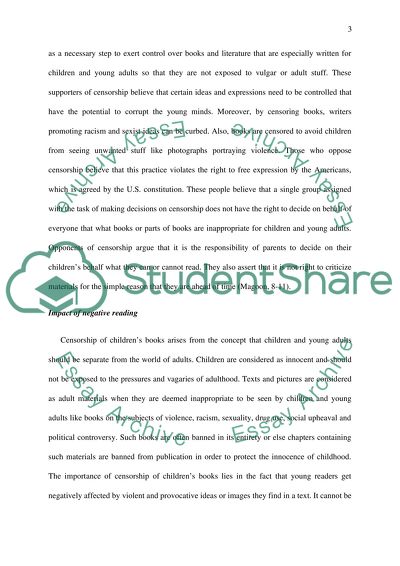Cite this document
(“Censorship of Childrens Books: The Giver by Lois Lowry Essay”, n.d.)
Retrieved from https://studentshare.org/english/1491059-censorship-of-childrens-books-the-giver-by-lois-lowry
Retrieved from https://studentshare.org/english/1491059-censorship-of-childrens-books-the-giver-by-lois-lowry
(Censorship of Childrens Books: The Giver by Lois Lowry Essay)
https://studentshare.org/english/1491059-censorship-of-childrens-books-the-giver-by-lois-lowry.
https://studentshare.org/english/1491059-censorship-of-childrens-books-the-giver-by-lois-lowry.
“Censorship of Childrens Books: The Giver by Lois Lowry Essay”, n.d. https://studentshare.org/english/1491059-censorship-of-childrens-books-the-giver-by-lois-lowry.


